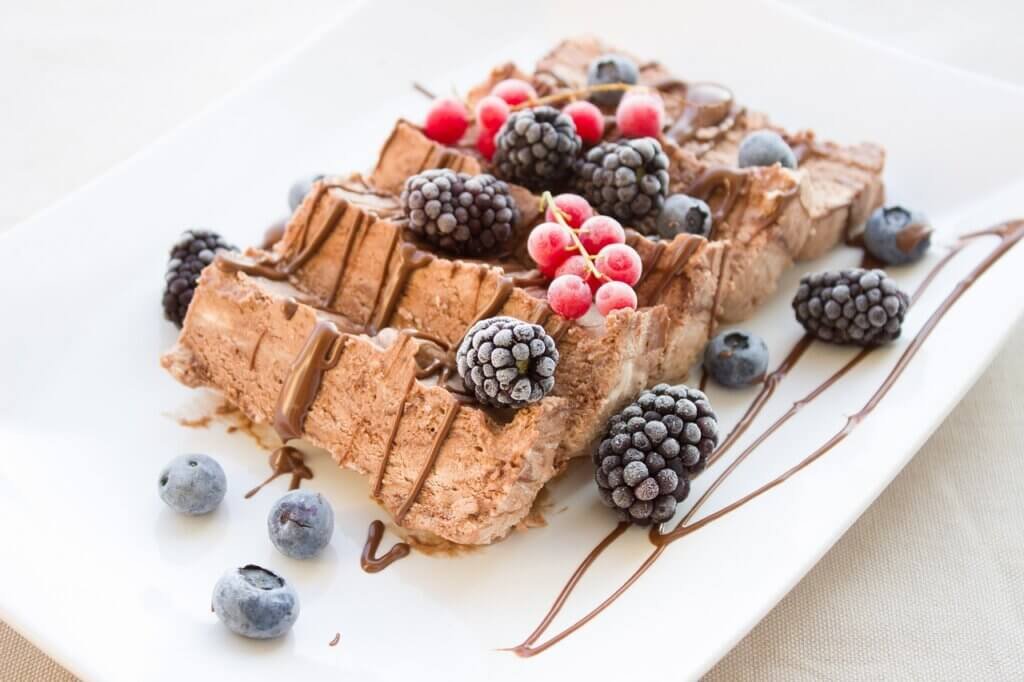Get ready to satisfy your sweet tooth as we take a delicious journey through the fascinating history of classic desserts. From the decadent layers of Tiramisu to the crispy caramelized topping of Crème Brûlée, these timeless treats have delighted taste buds for generations. Join us as we uncover the origins, myths, and cultural influences that have shaped these iconic desserts into the beloved favorites they are today. So grab a fork, sit back, and indulge in the sweet stories behind these delectable creations. Prepare to be captivated by the mouthwatering world of classic desserts!
Tiramisu
Origins of Tiramisu
Tiramisu, meaning “pick me up” in Italian, is a popular dessert that originated in the region of Veneto in Italy. While its precise origin story remains a subject of debate, Tiramisu is widely believed to have been developed in the 1960s, rising to fame in the city of Treviso.
One story traces Tiramisu’s roots to the 17th century, attributing its creation to the cooks of the Grand Duke of Tuscany, Cosimo III de’ Medici. It is said that they crafted this indulgent treat to nourish and energize the laborers constructing the city’s magnificent palaces.
Another legend claims that Tiramisu was invented by housewives during World War II, who cleverly used ingredients like eggs, sugar, coffee, and cocoa powder to create a delightful dessert for their loved ones. This story exemplifies the resourcefulness and ingenuity of Italian cooks during times of scarcity.
Ingredients Used in Tiramisu
Traditional Tiramisu is a heavenly combination of ladyfingers, mascarpone cheese, eggs, sugar, strong espresso coffee, cocoa powder, and sometimes a touch of alcohol such as Marsala wine or brandy. The delicate ladyfingers are delicately soaked in coffee, giving the dessert a rich and distinctive flavor.
Mascarpone cheese, known for its creamy texture, lends Tiramisu its indulgent and velvety consistency. Eggs add structure and contribute to the dessert’s lightness, while sugar brings sweetness and balance.
The cocoa powder sprinkled on top of Tiramisu adds a bittersweet touch, beautifully complementing the other flavors. Some variations of Tiramisu may incorporate additional ingredients such as chocolate shavings, liqueurs, or fruit to enhance the taste and presentation.
Evolution of Tiramisu
Since its humble origins, Tiramisu has gained immense popularity both in Italy and around the world. The dessert has evolved over time, with variations emerging to cater to different tastes and preferences.
One of the significant developments in the evolution of Tiramisu is the use of different types of ladyfingers, such as sponge cake or even savory biscuits, like amaretto. This variation allows for a unique twist while maintaining the essence of the dish.
Furthermore, creative reinterpretations of Tiramisu have emerged that incorporate flavors like pistachio, caramel, berries, and even matcha green tea. Pastry chefs and home cooks have been experimenting with different ingredients and techniques to put their own spin on this classic dessert, adding a touch of innovation and surprise.
Famous Tiramisu Variations
While the traditional Tiramisu holds a special place in the hearts of dessert enthusiasts, several variations have gained fame for their exceptional flavors and unique ingredients.
Zabaglione Tiramisu, for example, replaces the layers of mascarpone cheese with a luscious zabaglione custard made from egg yolks, sugar, and Marsala wine. This version adds a delightful twist to the classic recipe, infusing it with a velvety smoothness and a tantalizing aroma.
Another renowned variation is the Strawberry Tiramisu, which introduces fresh strawberries into the dessert, bringing a burst of fruity sweetness. The vibrant red berries not only add a pop of color but also provide a delightful contrast to the coffee-infused layers.
For those seeking a chocolatey indulgence, Chocolate Tiramisu offers a delectable alternative. This variation incorporates layers of chocolate mousse or ganache between the ladyfingers, creating a harmonious marriage of coffee and chocolate flavors.
Whether you prefer the timeless traditional recipe or want to explore new and exciting variations, Tiramisu continues to captivate dessert lovers worldwide with its delicate balance of flavors and heavenly textures.

Crème Brûlée
Origins of Crème Brûlée
Crème Brûlée, also known as burnt cream, is a classic French dessert that can be traced back to the late 17th century. Although its precise origin remains uncertain, Crème Brûlée has its roots in the lavish kitchens of French aristocracy.
The dessert gained popularity during the 18th century when it became a favorite among the French nobility and was often served at grand feasts and banquets. Its simple yet elegant presentation and the delicate interplay of flavors quickly made it a sensation.
One of the earliest mentions of a dessert resembling Crème Brûlée can be found in Francois Massialot’s 1691 cookbook, where he describes a dish called “Crema Catalana.” This delightful dessert consisted of a rich custard base topped with a layer of caramelized sugar. Some believe that this recipe served as the inspiration for the creation of Crème Brûlée.
Ingredients Used in Crème Brûlée
Crème Brûlée is characterized by its silky smooth custard base and the thin layer of caramelized sugar that crowns it. The primary ingredients used in this elegant dessert include heavy cream, egg yolks, sugar, and vanilla.
The creamy custard is made by gently cooking the egg yolks, sugar, and vanilla together while slowly incorporating the warm cream. This delicate process ensures the velvety texture and rich taste that Crème Brûlée is renowned for.
To achieve the famous caramelized sugar crust, a sprinkle of granulated sugar is spread on top of the chilled custard and then heated until it caramelizes. The result is a delightful combination of flavors and textures with the contrasting crunch of the caramelized sugar.
Evolution of Crème Brûlée
Over the centuries, Crème Brûlée has remained a beloved dessert, evolving and adapting to suit different culinary preferences and regional variations. While the classic vanilla-flavored Crème Brûlée remains the most popular, chefs and home cooks have introduced exciting twists to this timeless dessert.
One notable evolution is the infusion of additional flavors into the custard base. From citrus zest to lavender, coffee, chocolate, and even matcha, there is no shortage of innovative combinations to tantalize taste buds. These variations add new dimensions to the dessert, elevating it into an extraordinary culinary experience.
Moreover, chefs have experimented with the caramelized sugar crust by introducing different textures and flavors. Some have used brown sugar or incorporated crushed nuts, while others have experimented with flambéing the sugar to create a subtly smoky aroma.
Famous Crème Brûlée Variations
While the classic Crème Brûlée remains a timeless favorite, numerous variations have emerged over time, captivating dessert connoisseurs with their unique twists.
One such variation is the Cardamom and Orange Crème Brûlée, where the traditional vanilla flavor is enhanced with the exotic warmth of cardamom and the vibrant citrus notes of orange zest. This combination creates a delightful fusion of flavors, taking the dessert to new heights.
For chocolate lovers, Chocolate Crème Brûlée offers a divine indulgence. By incorporating high-quality dark chocolate into the custard, this variation adds a decadent richness and a hint of bitterness that complements the caramelized sugar perfectly.
Lemon Crème Brûlée is another beloved variation that infuses a tangy and refreshing citrus twist. The zesty lemon flavor brightens the custard and balances the sweetness, creating a harmonious blend of sweet and sour.
With its elegant simplicity and enchanting flavors, Crème Brûlée continues to captivate dessert enthusiasts worldwide. Whether you savor the classic version or explore the various innovative variations, this iconic French creation promises a truly divine culinary experience.



